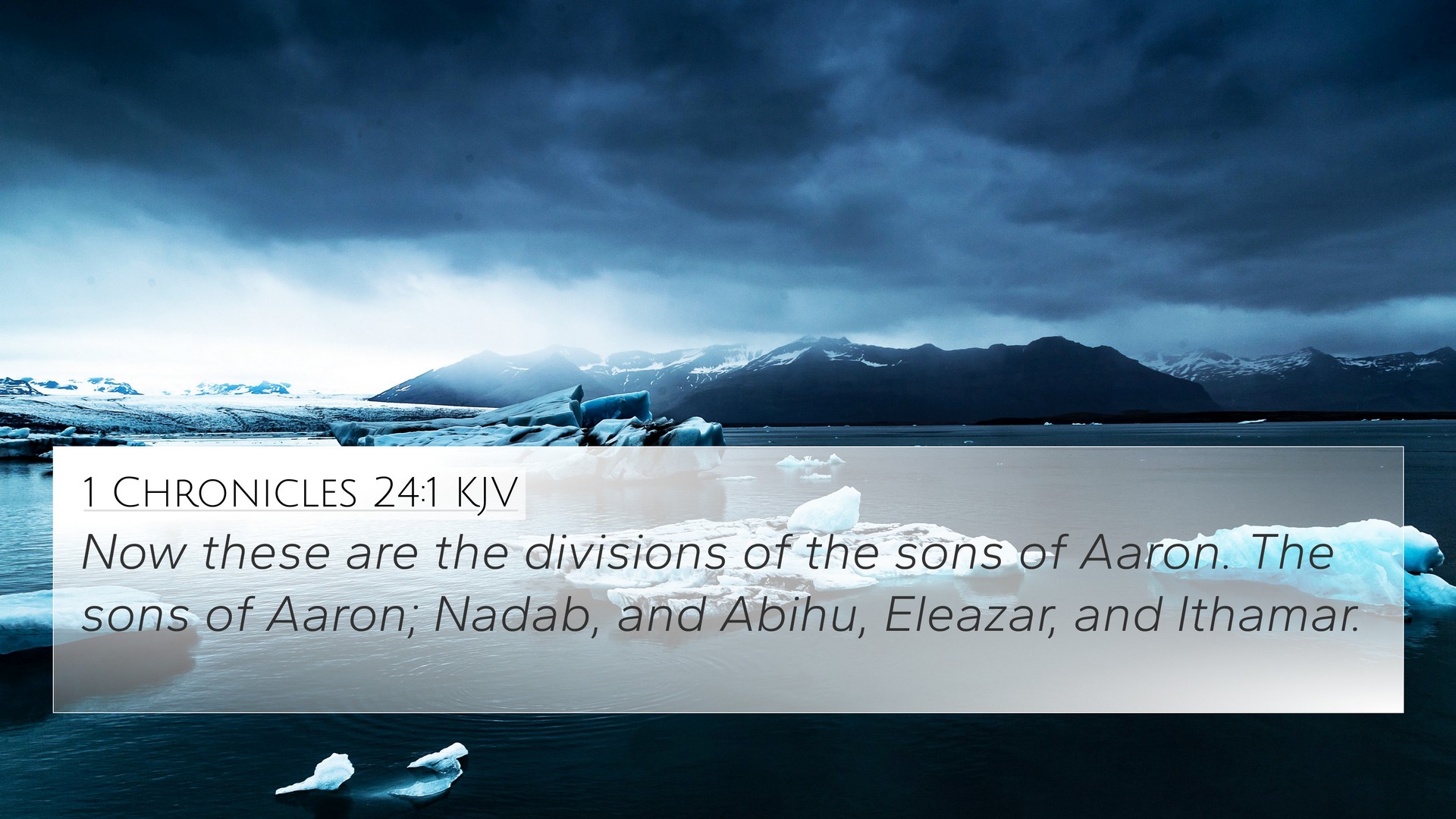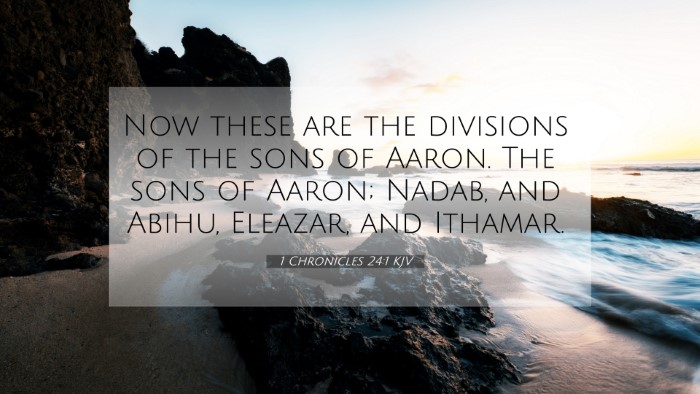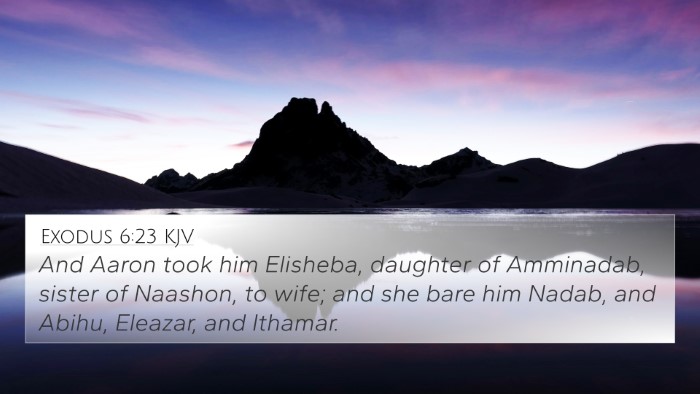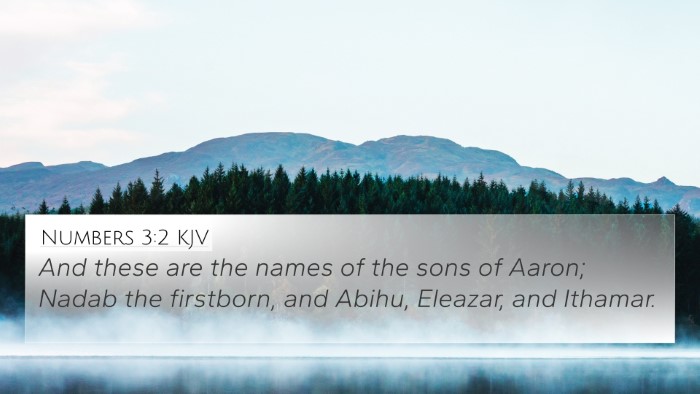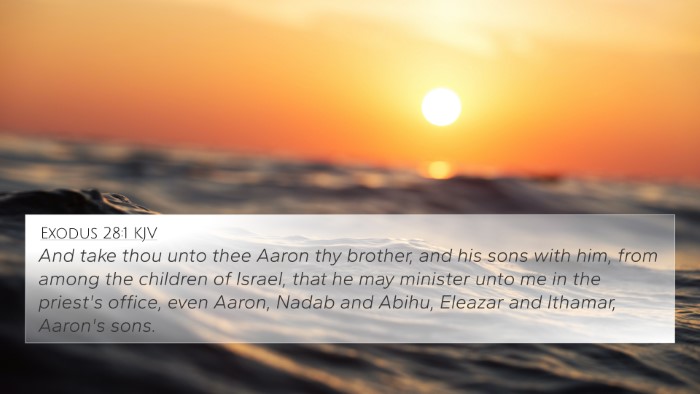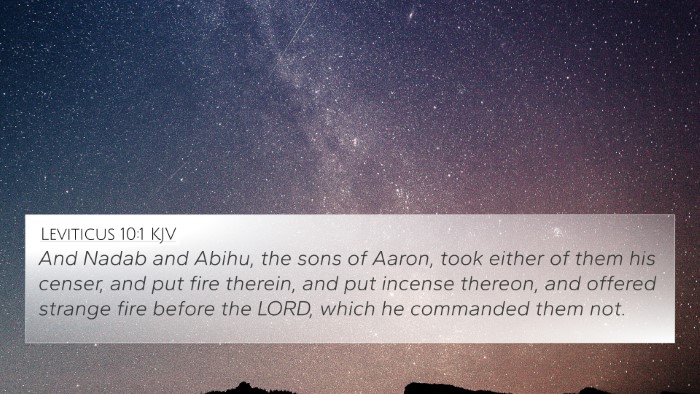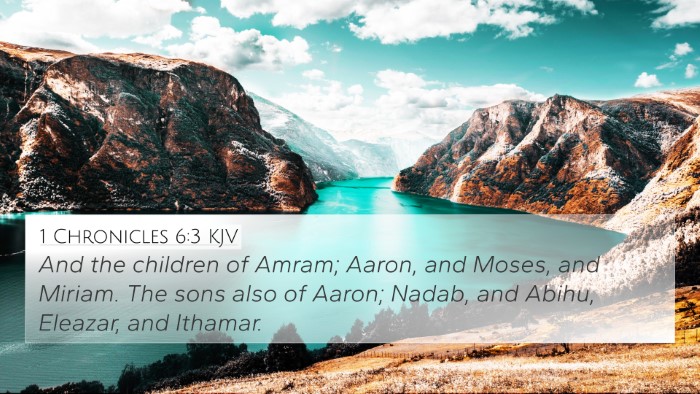Understanding 1 Chronicles 24:1
The verse 1 Chronicles 24:1 states: "Now these are the divisions of the sons of Aaron. The sons of Aaron were Nadab and Abihu, Eleazar and Ithamar." This verse introduces the system of priestly duties established by King David, highlighting the organization and responsibilities assigned to the descendants of Aaron.
Commentary Insights
Insights from Matthew Henry, Albert Barnes, and Adam Clarke provide a comprehensive understanding of this verse. Below are the key takeaways from the public domain commentaries:
Matthew Henry's Commentary
Matthew Henry emphasizes the importance of order within the priesthood. He notes that the divisions of Aaron's sons were not arbitrary but divinely instituted to ensure a structured approach to worship and service. This organization reflects God's desire for order and reverence within His house, which is essential for proper worship. The mention of Nadab and Abihu, who later faced divine judgment for offering unauthorized fire, serves as a cautionary tale about the holiness required in priestly duties.
Albert Barnes' Notes
Albert Barnes points out that the division of the priests into courses was a critical aspect of the Temple service. He suggests that these divisions allowed for a rotation system, enabling a manageable structure for worship. Barnes further explores the historical context, explaining that David established this system to address the overwhelming task the priests faced, ensuring that the Temple's needs were met effectively throughout the year.
Adam Clarke's Commentary
Adam Clarke addresses the significance of Aaron's lineage and highlights how each son played a distinct role in the priesthood. Clarke draws attention to the character failures of Nadab and Abihu, warning that their consequences serve as a reminder of the standards to which those in religious authority are held. He emphasizes the necessity of sanctification and obedience in fulfilling divine duties.
Cross References
1 Chronicles 24:1 connects with several other Biblical texts that enhance our understanding of priestly duties and organization:
- Exodus 28:1-5: Discusses the garments and consecration of Aaron and his sons.
- Leviticus 10:1-3: Chronicles the sin of Nadab and Abihu, emphasizing the importance of divine holiness.
- Numbers 3:1-4: Specifies the genealogy of Aaron and his sons, illustrating the priestly lineage.
- 1 Chronicles 23:6-13: Details David's organization of the Levites, which complements the priestly courses.
- Luke 1:5-8: Relates the priestly lineage to New Testament figures, connecting the Old and New Testaments.
- Hebrews 7:11-17: Discusses the significance of the Levitical priesthood in Christ's eternal priesthood.
- 2 Chronicles 23:6: Reflects on the importance of maintaining the sanctity of the Temple.
- Malachi 2:1-4: Warns the priests about the importance of obedience to God’s covenant for their lives and ministry.
- Matthew 12:36-37: Highlights accountability in spiritual leadership, drawing parallels to the responsibility of the priests.
- 1 Peter 2:9: Declares believers as a royal priesthood, indicating the continuation of the priestly calling in Christ.
Thematic Connections
The organization presented in 1 Chronicles 24:1 resonates with various themes throughout the Bible, such as:
- Divine Order: The establishment of order in the priesthood reflects God's intention for structure in worship (1 Corinthians 14:40).
- Holiness and Accountability: The fate of Nadab and Abihu reminds us of the seriousness of maintaining holiness (Hebrews 12:14).
- Ministry and Service: The rotation of priestly duties illustrates the communal aspect of ministry, fostering collaboration (Acts 6:1-4).
- Covenantal Relationships: God’s covenant with the priesthood emphasizes the seriousness of serving Him faithfully (Deuteronomy 10:8).
Conclusion
The verse 1 Chronicles 24:1 not only serves as a historical account but also establishes a framework for understanding the dynamics of spiritual leadership and responsibility. By employing tools for Bible cross-referencing, believers can uncover deeper meanings and connections between Scripture passages, enriching their study and application of the Word.
